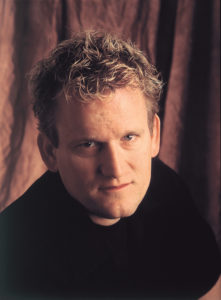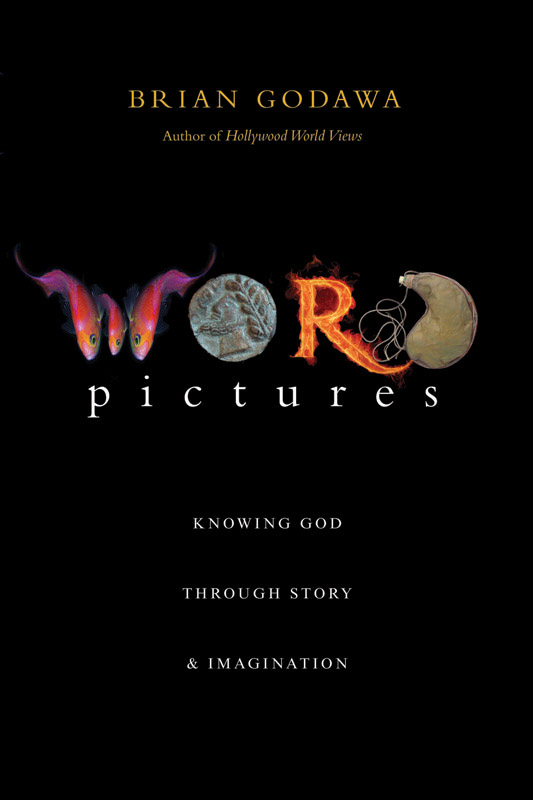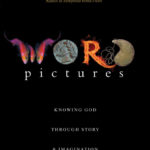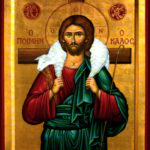Word Vs. Image, Part 1
Jesus taught about the Kingdom of God mostly through parables. And those parables communicated invisible reality in terms of visible, sensate and dramatic images and metaphors. To him, the Kingdom was far too deep and rich a truth to entrust to rational abstract propositions. He chose pearls, dragnets, leaven, mustard seeds, virgins, children, slaves, hired workers, vineyards, and buried treasure over syllogisms, abstraction, systematics or dissertations. And his usage of such metaphors and images was not a “primitive” form of discourse, as if ancient Jews were not sophisticated enough to understand abstraction. In fact, at the time of the writing of the New Testament, Israel was competently immersed in the Hellenistic culture that dominated the Middle East with its heavily abstracted thinking. They could do abstraction. They chose not to.
It would be more accurate to suggest the other way around, that indeed, stories and parables may be superior means of conveying theological truth than propositional logic or theological abstraction. As scholar N.T. Wright suggests, “it would be clearly quite wrong to see these stories as mere illustrations of truths that could in principle have been articulated in a purer, more abstract form.” 1 He reminds us that theological terms like “monotheism” “are late constructs, convenient shorthands for sentences with verbs in them [narrative], and that sentences with verbs in them are the real stuff of theology, not mere childish expressions of a ‘purer’ abstract truth.”2 Wright concludes that storytelling is in fact the way theology was done in both Testaments: “If Jesus or the evangelists tell stories, this does not mean that they are leaving history or theology out of the equation and doing something else, instead… [T]his is how Israel’s theology…found characteristic expression, we should not be surprised if Christian theology, at least in its early forms, turns out to be similar.”3
Brad Young, who has written in-depth on the Jewishness of Jesus’ theology, reminds us that our Western view of theology as a discipline is more philosophical than Jesus’ own Eastern culture within which he taught. “As Christians, we study God and systematize belief. The Eastern mind tends to view God through the emotions of human personality and individual experience. God is viewed through the lens of metaphors and parables of real life which make the abstract concepts more concrete.”4 Our Western bias toward rational discourse can too easily blind us to the biblical power of story and word pictures to embody truth.
Bailey writes about the tendency of Western culture with its stress on reason and logic to reduce biblical metaphors and parables to mere illustrations of concepts, as if word pictures or images were not essential to the teaching of theological truth. As if it is the idea that matters and the illustration is mere window dressing. “This,” he says, “is a time honored way to ‘do theology.’” But then he enlightens us,
There is, however, another way to create and communicate meaning. It involves the use of word pictures, dramatic actions, metaphors and stories. This latter method of “doing theology” shines through the pages of Scripture. Dale Allison has written, “Meaning is like water: it is shaped by the container it fills.” The biblical writers and reciters make extensive use of metaphors, parables and dramatic actions. Jesus does not say, “God’s love is boundless,” Instead, he tells the story of the prodigal son. He does not say, “Your benevolence must reach beyond your own kith and kin.” Rather, he tells the story of the Good Samaritan.5
 Bailey concludes his analysis of Jesus’ own use of such word pictures, “Jesus was clearly a “metaphorical theologian” whose primary style of creating meaning was the skillful use of metaphor, parable and dramatic action.”6 And this “story” approach to theology means that stories are not mere carriers of doctrine, as if they can be discarded once the doctrine or “truth” is figured out. A parable does not contain a single truth or doctrine. It is a complex web of relationships and ambiguity interacting with the audience and their understanding and misunderstanding of God. Stories must be inhabited by the audience for the truth to be understood properly. They cannot be separated from the truth they embody.7 The parable of the prodigal son, for instance, is a complex network of metaphors for Jesus (the father), gentiles and outcasts (the younger son), self-righteous Jews (the older son) and their relationships. Bailey contends that the parable is not even intended to express salvation of an individual as much as it is intended to be a retelling of the story of Jacob (and therefore, the story of Israel) with Jesus as the replacement of Israel, along with other challenges to people’s view of God.
Bailey concludes his analysis of Jesus’ own use of such word pictures, “Jesus was clearly a “metaphorical theologian” whose primary style of creating meaning was the skillful use of metaphor, parable and dramatic action.”6 And this “story” approach to theology means that stories are not mere carriers of doctrine, as if they can be discarded once the doctrine or “truth” is figured out. A parable does not contain a single truth or doctrine. It is a complex web of relationships and ambiguity interacting with the audience and their understanding and misunderstanding of God. Stories must be inhabited by the audience for the truth to be understood properly. They cannot be separated from the truth they embody.7 The parable of the prodigal son, for instance, is a complex network of metaphors for Jesus (the father), gentiles and outcasts (the younger son), self-righteous Jews (the older son) and their relationships. Bailey contends that the parable is not even intended to express salvation of an individual as much as it is intended to be a retelling of the story of Jacob (and therefore, the story of Israel) with Jesus as the replacement of Israel, along with other challenges to people’s view of God.
- N.T. Wright, The New Testament and the People of God (Minneapolis, Mn.: Fortress Press, 1992), p. 77. ↩
- Ibid., 78. ↩
- Ibid., 78. ↩
- Brad H. Young, Jesus the Jewish Theologian (Peabody, Mass.: Hendrickson Publishers, 1995), p. 272. ↩
- Bailey, Jacob, pp. 21-22. ↩
- Bailey, Jacob, p. 22. ↩
- Bailey, Jacob, pp. 51-52. ↩








































Very insightful post–thank you.
You’re welcome, Sherwood.
I’m pretty sure this guy spoke at our campus once.